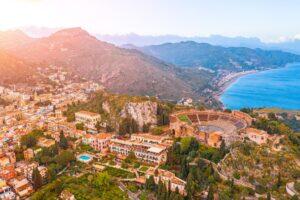Fodor's Expert Review Museo del Satiro Danzante
In 2005, after four years of painstaking restoration in Rome (and several attempts to keep it there in the capital), the Dancing Satyr, the ancient Greek statue found by fishermen off the town's coast, found its permanent home here in the deconsecrated church of Sant’Egidio. Exquisitely lit and larger than life, it is a truly extraordinary work (despite missing both arms and a leg) caught mid-air, mid-dance in the throes of ecstasy, with the musculature and grace of movement associated nowadays with contemporary ballet. Scholars think it probably formed part of a group with other dancing Maenads, lost when the ship carrying them capsized in the Sicilian Channel. Ancient Greek bronze statues are extremely rare—only five have survived—as bronze was precious, and most were melted down. The satyr was created using the lost wax process, a technology designed to use as little bronze as possible: a clay model of the statue was made and fired, and when it cooled, it was covered... READ MORE
In 2005, after four years of painstaking restoration in Rome (and several attempts to keep it there in the capital), the Dancing Satyr, the ancient Greek statue found by fishermen off the town's coast, found its permanent home here in the deconsecrated church of Sant’Egidio. Exquisitely lit and larger than life, it is a truly extraordinary work (despite missing both arms and a leg) caught mid-air, mid-dance in the throes of ecstasy, with the musculature and grace of movement associated nowadays with contemporary ballet. Scholars think it probably formed part of a group with other dancing Maenads, lost when the ship carrying them capsized in the Sicilian Channel. Ancient Greek bronze statues are extremely rare—only five have survived—as bronze was precious, and most were melted down. The satyr was created using the lost wax process, a technology designed to use as little bronze as possible: a clay model of the statue was made and fired, and when it cooled, it was covered with a layer of wax, followed by another layer of clay, this time with several holes. Then liquid bronze (heated to something like 1800°F) was poured through the holes. The melted wax then ran out, and the clay core turned to sand, leaving a bronze shell that would then have been polished. Other finds from under the sea are displayed in the museum, the most intriguing of which is the bronze foot of an elephant.
READ LESS








